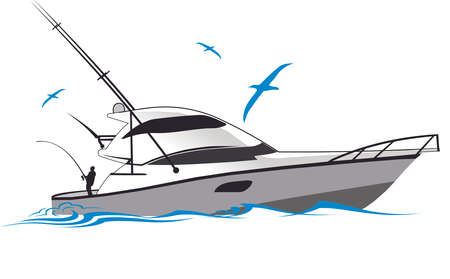1. Ice Shelter and Seating
When it comes to ice fishing, staying warm and protected from the elements is key to having a successful and enjoyable day on the ice. One of the most important pieces of gear you’ll need is a reliable ice shelter. These shelters act like portable cabins that shield you from biting winds, snow, and freezing temperatures.
Types of Ice Shelters
| Type | Description | Best For |
|---|---|---|
| Pop-Up Shelters | Quick and easy to set up with plenty of space inside. Lightweight and ideal for anglers who move spots often. | Casual fishers or those who like mobility |
| Flip-Over Huts | Attached to a sled base; flips over to create an instant shelter. Offers better insulation and wind protection. | Frequent anglers looking for convenience and warmth |
| Hub-Style Shelters | Larger, tent-like structures with more room for multiple people and gear. Takes a bit longer to set up. | Group outings or long stays on the ice |
Comfortable Seating Options
Sitting on a cold bucket for hours isn’t exactly fun. That’s why investing in a comfortable seat can make a big difference. Look for insulated swivel seats that provide both warmth and mobility, allowing you to turn easily when checking lines or chatting with buddies. Another popular option is using a padded bucket lid seat—simple yet effective.
Top Features to Look For:
- Insulation: Keeps your body heat from escaping into the ice below.
- Swivel Function: Lets you rotate 360 degrees without standing up.
- Storage Integration: Some seats come with built-in storage for tackle or snacks.
A good shelter combined with the right seating will keep you warm, dry, and comfortable all day long—so you can focus on what really matters: catching fish.
2. Insulated Clothing and Footwear
When youre ice fishing in freezing temperatures, staying warm isnt just about comfort—its about safety and keeping your focus on the fish. Dressing in proper layers with the right materials helps regulate your body temperature and keeps moisture away from your skin, which is key when youre spending hours on a frozen lake.
Layer Up the Right Way
The secret to staying warm on the ice is layering. Each layer serves a purpose, from managing sweat to trapping heat and blocking wind. Heres a quick breakdown of what you should wear:
| Layer | Purpose | Recommended Materials |
|---|---|---|
| Base Layer | Wicks moisture away from skin | Merino wool, synthetic blends (avoid cotton) |
| Mid Layer | Traps body heat for insulation | Fleece, down, insulated vests or jackets |
| Outer Layer | Blocks wind and repels water/snow | Waterproof/breathable shells, insulated parkas |
Keep Your Hands Warm and Dry
Your hands are one of the first parts of your body to feel the cold. Waterproof gloves or mittens with thermal lining are essential. Look for options that allow flexibility so you can still handle bait and gear without removing them constantly.
Don’t Forget Your Feet
A quality pair of thermal boots can make or break your day on the ice. Choose boots that are:
- Insulated: Look for at least 800g of insulation for sub-zero temps.
- Waterproof: Snow and slush can soak regular footwear quickly.
- Roomy: Tight boots restrict circulation, making your feet colder.
Add thick wool socks (and maybe a backup pair) to keep your toes toasty all day long.
Pro Tip:
Avoid sweating before you even get to your spot—dress light while setting up your gear, then add your heavier layers once youre settled in.
Stay Warm = Stay Longer = Catch More Fish!
The better prepared you are to face the cold, the longer you can stay out—and that means more chances to land a trophy catch.

3. Augers and Hole Drilling Equipment
When youre ice fishing, the first step to getting lines in the water is drilling a hole through the ice. The right auger can make this job quick, easy, and safe. There are three main types of augers to choose from—manual, gas-powered, and electric. Each has its pros and cons depending on your needs, budget, and how much gear you’re hauling out onto the ice.
Types of Ice Augers
| Type | Pros | Cons |
|---|---|---|
| Manual Auger | Lightweight, affordable, no fuel or batteries needed | Requires physical effort, slower on thick ice |
| Gas-Powered Auger | Powerful, fast drilling, great for thick ice | Louder, heavier, requires fuel and maintenance |
| Electric Auger | Quiet operation, low maintenance, eco-friendly | Battery life can be limited in extreme cold |
Choosing the Right Size and Blade Sharpness
A sharp blade is essential for cutting clean holes quickly. Dull blades will slow you down and can even be dangerous if they cause the auger to bind or jump. Most anglers find that a hole size between 6 to 8 inches works well for most species like perch, walleye, or trout. If youre targeting larger fish like lake trout or northern pike, you might want to go up to a 10-inch auger.
Quick Tips:
- If youre moving around a lot or packing light, go with a manual or electric auger.
- If youre drilling many holes or dealing with thick ice all season long, consider gas-powered options.
- Keep an extra set of blades in your gear bag—just in case.
Having the right hole-drilling equipment helps you get set up fast and spend more time doing what really matters—catching fish and staying warm.
4. Rods, Reels, and Tackle for Ice Fishing
When it comes to ice fishing, having the right rod, reel, and tackle can make a big difference in both your comfort and your success out on the ice. Standard open-water gear usually won’t cut it in freezing conditions, so it’s important to use equipment designed specifically for ice fishing.
Ice Fishing Rods and Reels
Ice rods are much shorter than traditional fishing rods—typically between 24 and 36 inches long—making them easier to manage inside an ice shelter or when kneeling over a hole. Choose a rod based on the species you’re targeting:
| Target Species | Rod Power | Rod Action |
|---|---|---|
| Panfish (like bluegill or crappie) | Ultralight to Light | Fast action |
| Walleye or Trout | Medium | Medium to fast action |
| Northern Pike or Lake Trout | Medium-heavy to Heavy | Moderate to fast action |
Your reel should be matched to your rod and capable of handling cold temperatures. Inline reels reduce line twist and are great for panfish, while spinning reels offer versatility for a wider range of species.
Essential Ice Fishing Tackle
The cold water slows fish metabolism, so finesse often beats flashy presentations. Here are some must-have tackle items for your ice fishing box:
- Jigs: Tungsten jigs sink faster and offer better sensitivity. Pair with soft plastics or live bait for best results.
- Spoons: Great for attracting larger fish like walleye or lake trout. Use jigging spoons with fluttering action for added flash.
- Tip-ups: These devices let you fish multiple holes at once. When a fish bites, a flag pops up—no need to hold the rod!
- Bait: Waxworms, minnows, and spikes work well in cold water. Always choose bait that matches your target species’ preferences.
Tackle Suggestions by Species
| Species | Recommended Jig/Spoon Size | Bait Type |
|---|---|---|
| Panfish | 1/64 oz – 1/16 oz jigs | Waxworms, spikes, microplastics |
| Walleye | 1/8 oz – 3/8 oz spoons/jigs | Minnows, soft plastics |
| Northern Pike | Larger tip-up rigs with treble hooks | Live shiners or sucker minnows |
Selecting the right rods, reels, and tackle for your target species is key to maximizing both comfort and catch rate during your ice fishing adventures.
5. Electronics and Safety Gear
When it comes to ice fishing, having the right electronics and safety gear can make all the difference—not just in staying safe, but also in helping you land more fish.
Fish Finders: Flashers and Sonar Units
If youre serious about increasing your catch rate, a flasher or sonar unit is a game-changer. These devices help you locate fish under the ice by showing real-time movement, allowing you to drop your bait at just the right depth.
| Device | Function | Why You Need It |
|---|---|---|
| Flasher | Displays real-time vertical movement of fish and bait | Helps pinpoint fish location instantly |
| Sonar Unit | Gives detailed images of structure and fish below the ice | Great for scouting new spots and understanding bottom contours |
Safety Gear Essentials
The ice can be unpredictable, so packing the right safety equipment is crucial every time you head out.
Must-Have Safety Items:
- Ice Picks: Wear these around your neck for quick access—they can help you pull yourself out if you fall through the ice.
- Floatation Suit: Acts like a life jacket while keeping you warm. Its an investment that could save your life.
- Spud Bar: Use this to check ice thickness as you walk. One good hit can tell you if its safe or not.
Quick Ice Thickness Guide:
| Ice Thickness | Activity Supported |
|---|---|
| 4 inches | Walking and ice fishing on foot |
| 5-7 inches | Snowmobiles or ATVs |
| 8-12 inches | Small cars or light trucks |
| 12+ inches | Larger vehicles (with caution) |
Whether youre using high-tech electronics to find fish or carrying basic tools to stay safe, being prepared is key. With the right gear, you’ll have more fun and peace of mind out on the ice.


